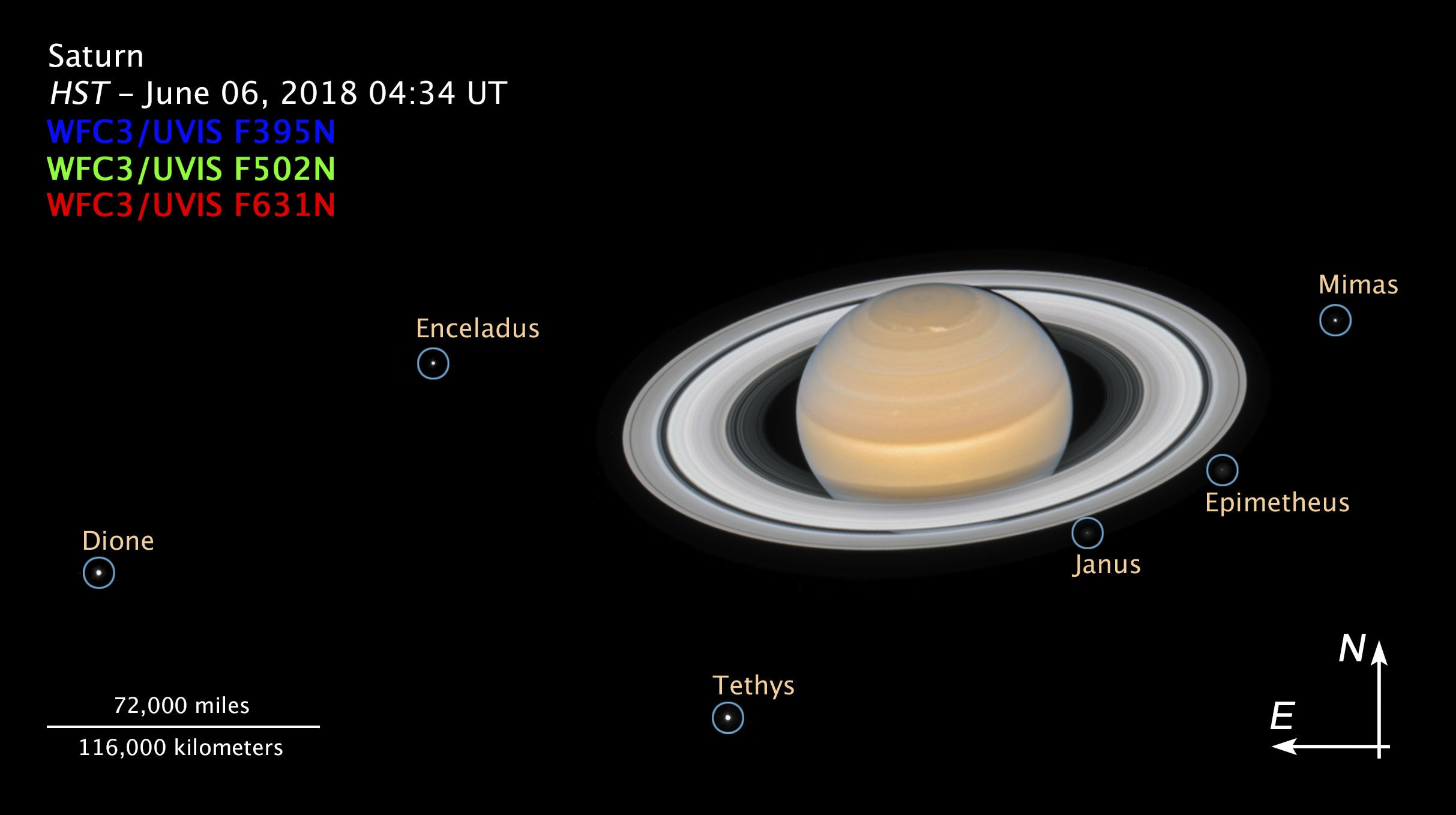Create a free profile to get unlimited access to exclusive videos, sweepstakes, and more!
Double Hubble Planets

If it’s possible this week for you to go outside just after sunset and look around, you may notice an unusual number of bright stars in the sky. The thing is, the brightest of them aren’t stars: They’re planets.
Venus, the most brilliant, dangles in the west, Jupiter is more towards the south, Saturn to the left, and then Mars glows balefully over the eastern horizon* . Mercury isn’t very bright but can be seen just after sunset in the west, and even far fainter Pluto and Neptune join the fun in the southeast, though you’ll need a pretty good ‘scope to see them (Uranus rises much later, around midnight, but you can spot it in binoculars if you know where to look).
To celebrate this solar system lineup, the folks at Hubble took a look at two our planetary neighbors, and both make for phenomenal images.
First up: Mars!
As you may have heard, the Red Planet has been suffering through a global dust storm since late May, and that’s just now beginning to subside. When Hubble took this shot, on July 18, the surface of Mars was still mostly obscured. It looks a little funny to me, since I’m used to seeing familiar markings on the ochre face of the planet — the line of huge volcanoes, the basalt uplands looking dark grey against the smoother orange plains — but it’s still hard to pick out features while the storm occludes them.
Helpfully, an annotated image was created, too:
Say, you can see its moons Phobos and Deimos, too! Cool.
Incidentally, it looks like the source of Martian dust has finally been IDed: It comes from a region called the Medusae Fossae Formation, an enormous volcanic outflow deposit. The rocks in that area match the abundance of sulfur and chlorine seen in the dust. Dust is made by erosion as wind eats away at the deposit. It’s still huge, over a million cubic kilometers, even though it’s been eroding for three billion years. How about that?
Next up: Saturn!
Ah yes, the ringed crown of the solar system. Funny, compared to the super-high-resolution Cassini images this looks a bit fuzzy, but that’s hugely unfair. Cassini was there, while Hubble is forced to stay in Earth orbit, a billion kilometers away. Even from this huge distance, though, the image is gorgeous and phenomenal…
The hexagonal north polar vortex is obvious, a dark six-sided stream surrounding the pole. There’s a nice white storm brewing there, too, ragged and stretched out by Saturn’s rapid rotation — a day there is only ten hours long. Saturn has haze in its atmosphere that dulls the colors and banding as seen from outside, unlike Jupiter which has obvious and bold patterns. Still, many such belts and zones can be seen.
This shot was taken on June 6, about a month before opposition, when Saturn is opposite the Sun in the sky. This is when it’s up all night, and is in general closest to Earth. Think of it like two racecars driving in concentric circular tracks. When one passes the other, a line drawn from the center of the track through the inside car goes through the outside car. From the inside car, the outside car is directly opposite the track center.
That means they’d be closest together at that point… if the track is circular. In the case of planets, with elliptical orbits, it gets more complicated. Mars can actually be closest to Earth when it’s not at opposition! Its orbit is pretty elliptical, and rotated a bit with respect to Earth’s. It was at opposition on July 27, but was closest to us on July 30.
Either way, right now is a great time to get out and take a look. Mars is always pretty small, so features are hard to see, and the dust storm isn’t helping. Still, it’s worth looking at if only to see the color. And Saturn is always a pure joy, a gorgeous bauble just hanging in the eyepiece of even a small telescope.
Sky and Telescope has a page where you can search for astronomy clubs near you, and you can look for local observatories as well! See if they’re holding any public star parties and go take a look. All these worlds really are yours.
*If you live south of the equator, flip north for south and left for right in my description.






























